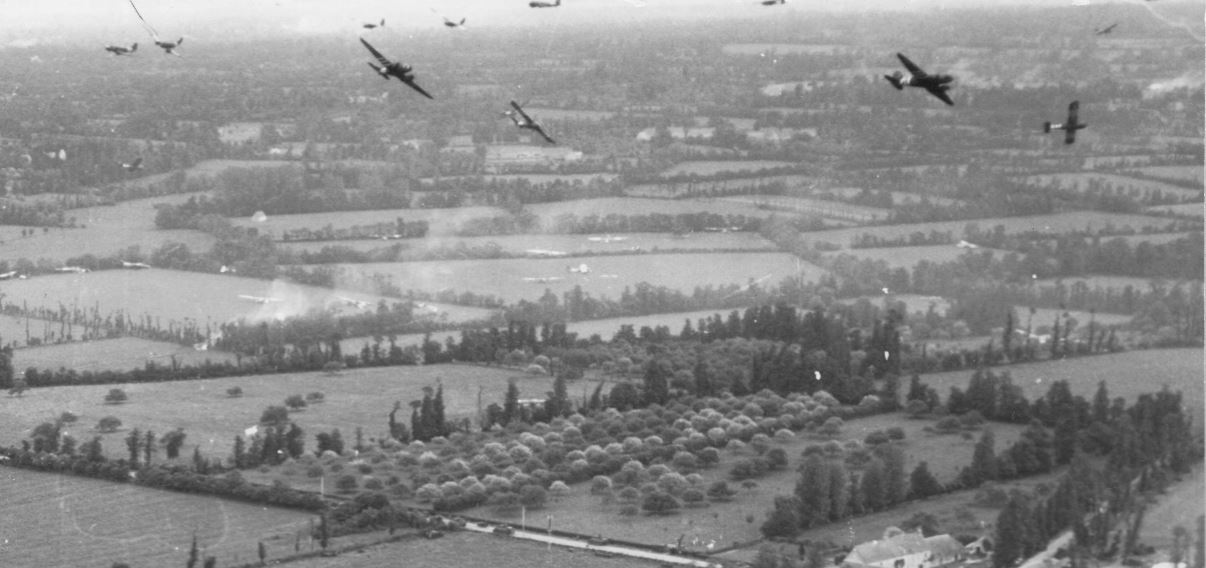
Courtesy of the National Archives / NWWIIGPA Collection
British built ‘Horsa’ gliders of the Ninth AF Troop Carrier Command are shown just where they landed in Normandy to bring the first airborne infantry on D-Day in support of troops
attacking by the sea. Two of the gliders which appear to have broken in half upon landing were purposely disassembled to speed up unloading. To the left abandoned parachutes
belonging to paratroopers already on their way to rendevouz point.
Courtesy of the National Archives / NWWIIGPA Collection
British built ‘Horsa’ gliders of the Ninth AF troop Carrier Coomand are shown just where they landed in Normandy to bring the first airborne infantry on D-Day in support of troops
attacking by the sea. Two of the gliders which appear to have broken in half upon landing were purposely disassembled to speed up unloading. To the left abandoned parachutes
belonging to paratroopers already on their way to rendevouz point.
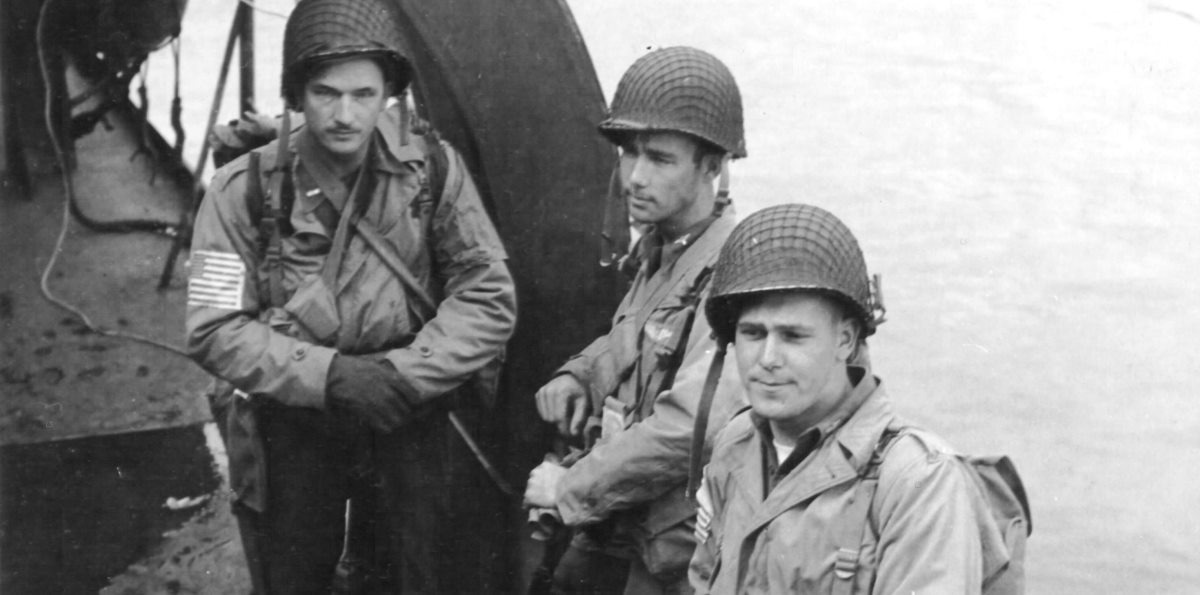
National Archives photo: Glider pilots who hauled hundreds of America's airborne fighting men to the front are pouring back through depots of the ASC to pick up new gliders, fresh troops. Show left to right, as they talk things over on an invasion craft are:
Lt. Charles [Bickett] Ellington of High Point NC., 80th TC Squadron/ 436th TC Group, would go on to fly Holland
and the Rhine Crossing; Flight Officer Joe N. Gilreath of Fort Worth, TX., 80th TC Squadron/ 436th TC Group, would go on to fly Holland and the Rhine Crossing; and Flight Officer Kenneth Ensor, Plano, IL., 80th TC Squadron / 436th TC Group, would go on to fly Southern France, Holland and the Rhine Crossing.
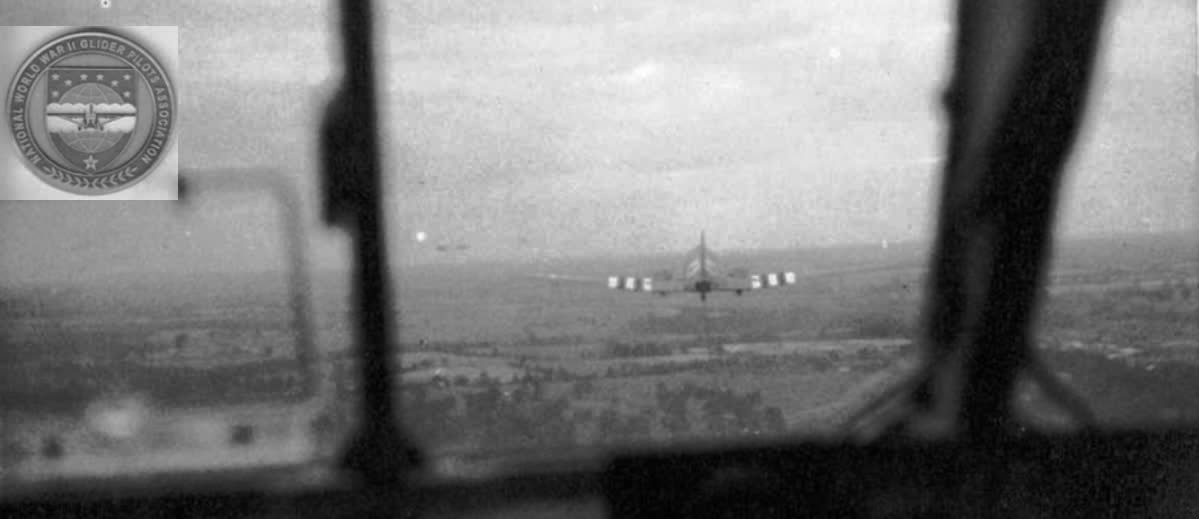
307th Medical Company in mission Elmira on their way to Normandy. The 307th was taken in by the 438th TC Group from Greenham Common and the 436th TC Group from Membury. Photo taken by Kenneth I Knotts, 307th Medical Company. USAMHI RG886
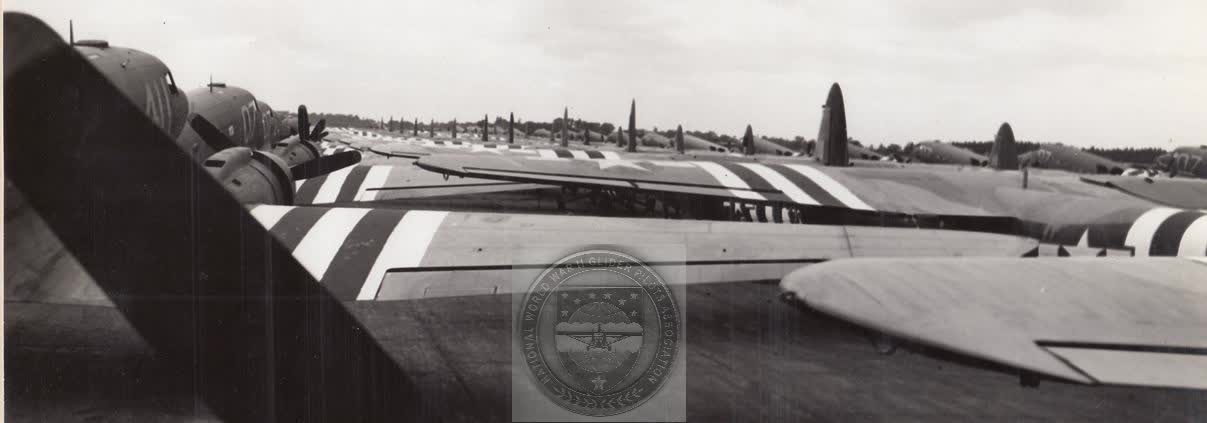
Courtesy of the National Archives / NWWIIGPA Collection
In the few minutes before take off time, scores of Douglas C-47 transports and the gliders they will tow, loaded with airborne infantry men, are shown stacked on a 9th Troop Carrier Command field.
[This field is the home of the 438th Troop Carrier Group, station 486, located at Greenham Commons in Berkshire England near the town of Newbury. The two squadron codes that can be seen in the photo on the nose of the C-47s is 4U, the 89th Squadron and Q7, the 90th squadron.]
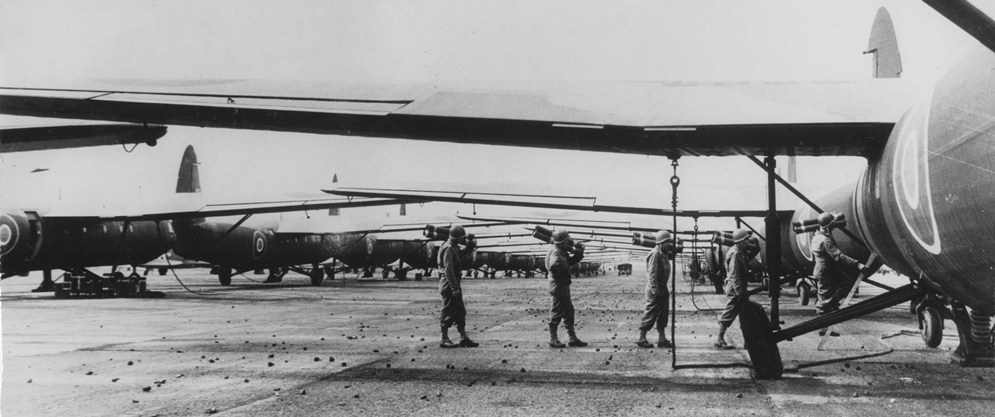
Courtesy of the National Archives / NWWIIGPA Collection
American soldiers load a 25-place British horsa glider already on the take-off line at an English Airbase berfore being lifted into the air by C-47 tow planes tranporting soldiers across the English Channel into Normandy, France on D-Day, June 6, 1944 during World War II.
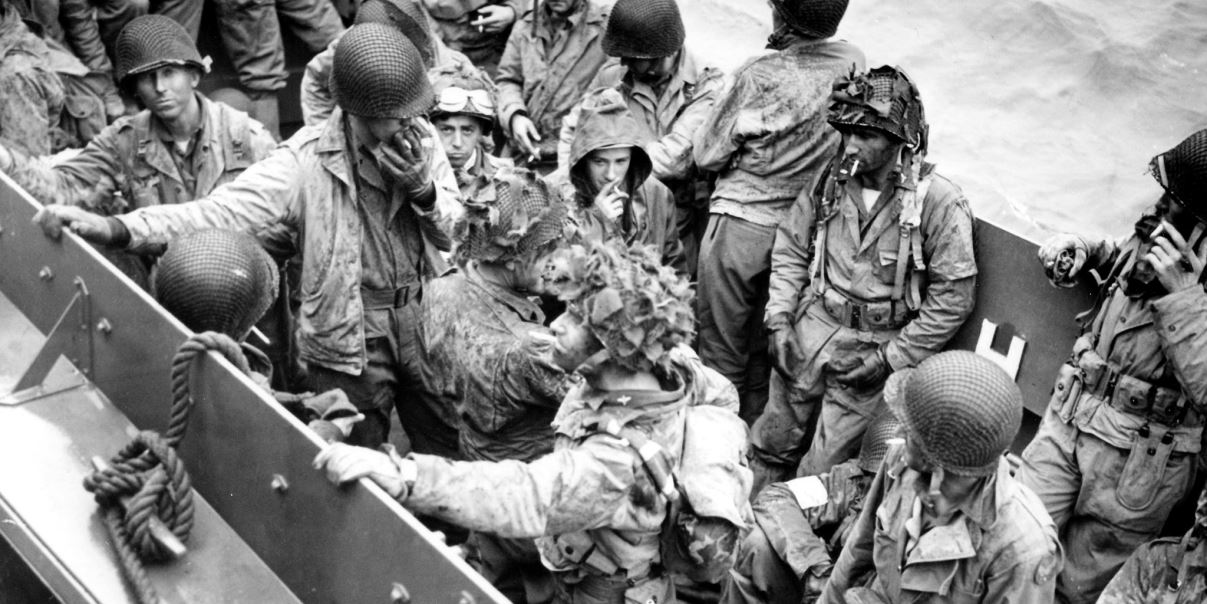
National Archives photo: Glider pilots who flew the 82nd and 101st Airborne into Landing Zones E, O and W in seven serials on the 6th and four serials on the 7th of June , 1944,
are evacuating to prepare for the next major operation; Southern France.
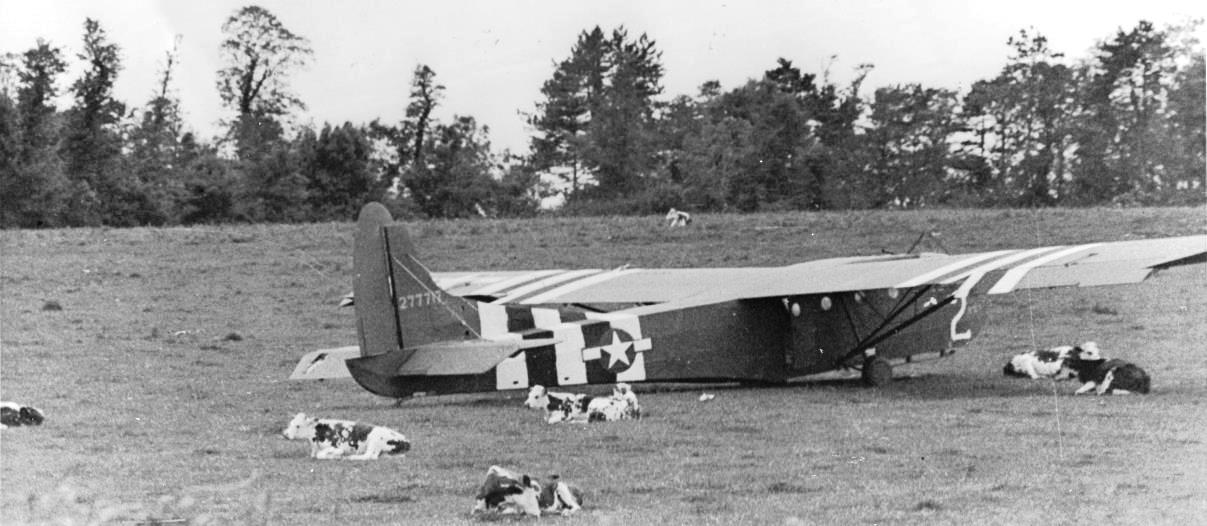
National Archives photo: Glider No 42-77717.
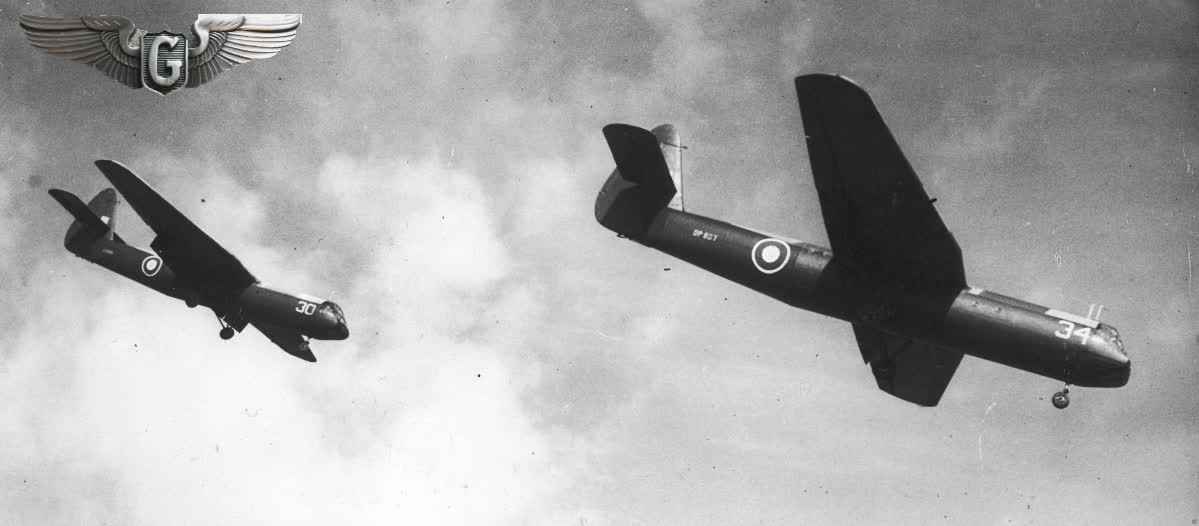
Silent Wings Museum Photo:
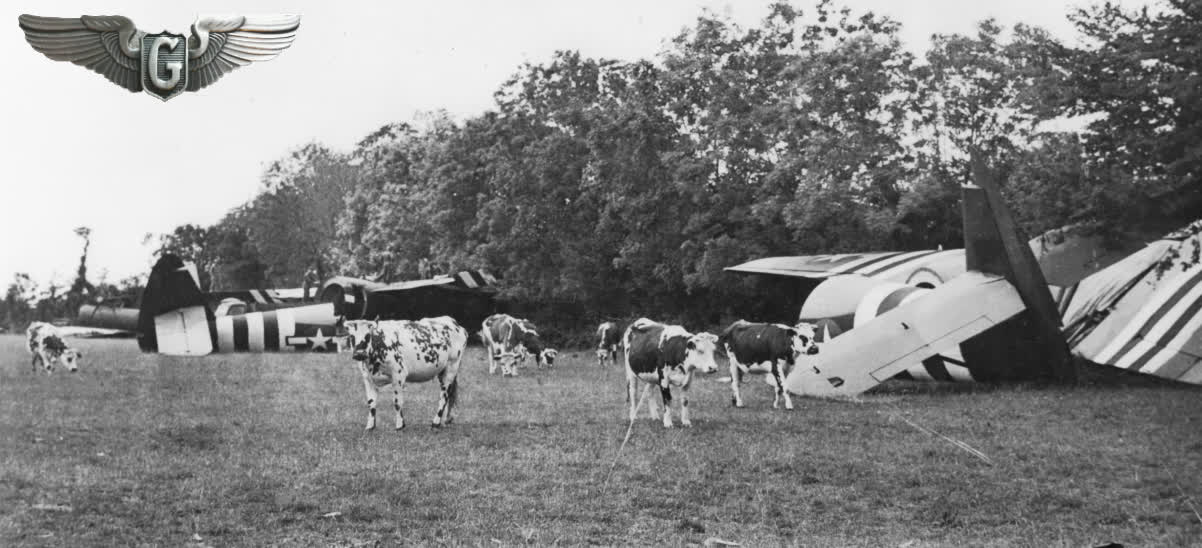
Silent Wings Museum Photo:
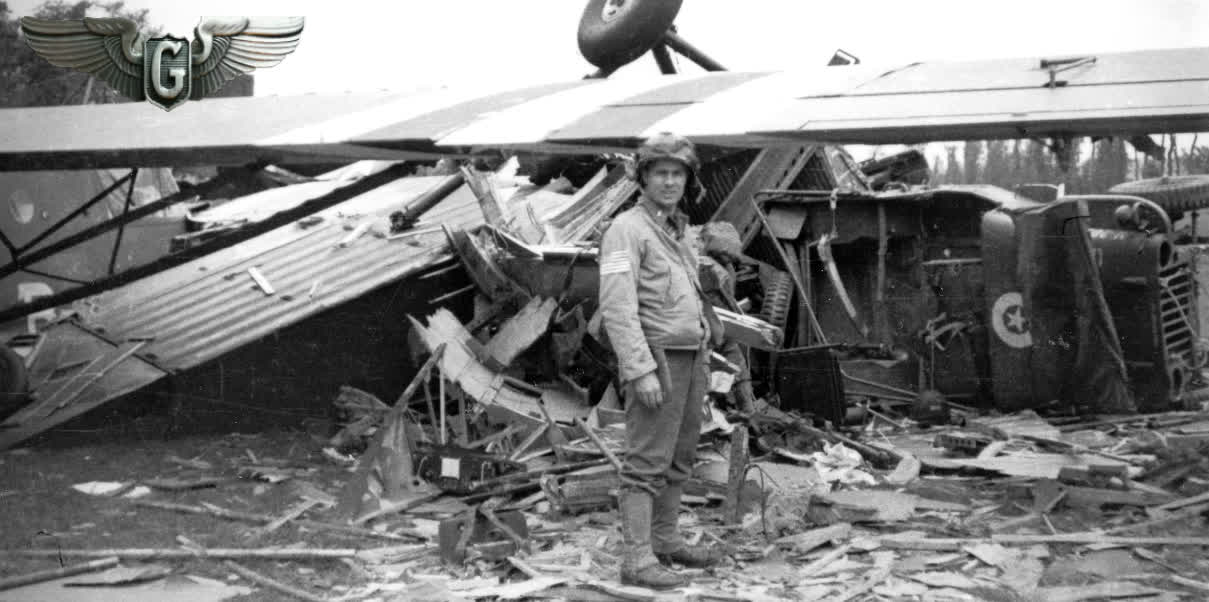
Silent Wings Museum Photo, Back of photo: Photo by F/O T. Blecker Ripsom, glider pilot of 94th TC Sqdn. Printed from original neg by Charles H Young. 1988.
F/O Arnold Wursten and F/o T. Bleecker Ripsom found
this wrecked glider soon after their landing in Normandy on 7 June, 1944. They got some help, turned the jeep back on it's wheels, used a jerry can for a gas tank, put the steering wheel back on and drove it to the beach.
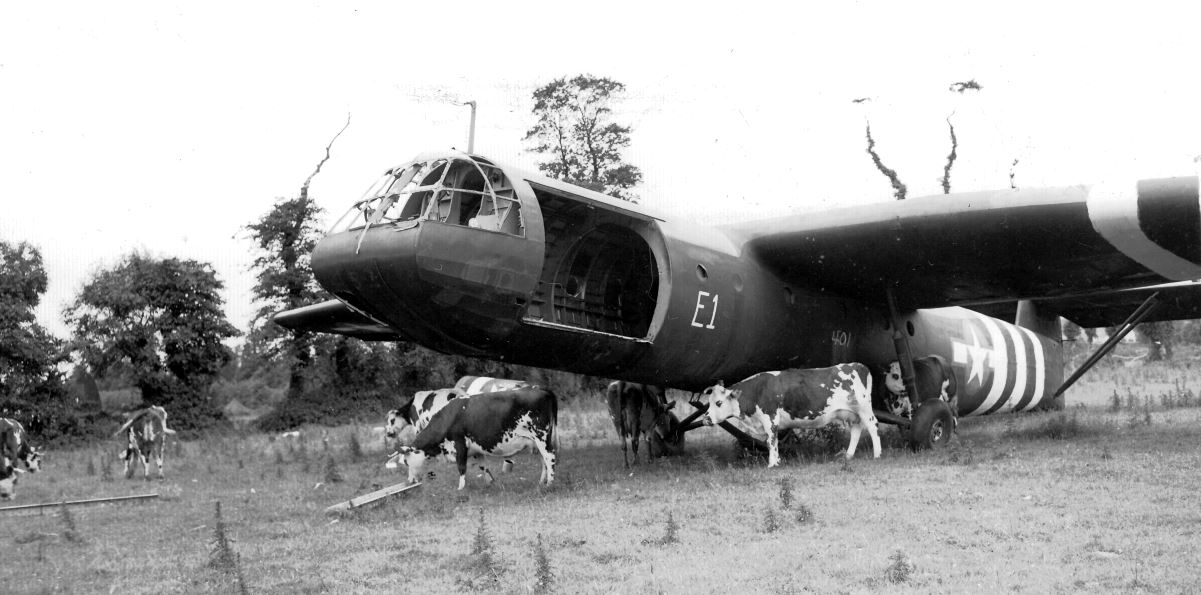
National Archives photo: Photo taken 8 July 44 by Signal Corps. Photographer Ryan. French fields again returned to their original inhabitants.
Cows graze again where once U.S. gliders and airborne soldiers landed to hight hand to hand with the German Wehrmacht.

National Archives Photo: